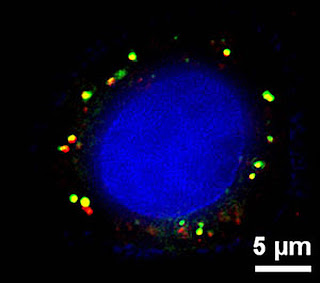Hello Nanotechnology Today Subscribers sookietex here. As twitter's @sookietex, please follow. i'm taking part in a promotion by Klout.com, [great service] and the new TNT show "Falling Skies" [great show]. i was chosen, along with other tweeters, to receive swag, an ‘Alien Invasion Survival Kit’ and to be part of the Show's Army of Influence.
The goal for our Army of Tweeters is to inspire interest and watchers for Falling Skies using Social Media. Participants are listed on the "Army of Influence Leaderboard" and whomever is at the top of board at the end of the promotion wins a walk-on role in a upcoming episode of Falling Skies.
Now Gentle Readers here’s what I would like YOU TO DO:
During the promotion, i’ll be tweeting A LOT about alien invasion, Falling Skies and the Human resistance movement known as the 2nd Mass [because of their location in Boston, Mass.] using the #fsincentivized hashtag. Please Retweet [RT] those tweets. Or if that's not your thing, please tweet this for me:
I want @Sookietex to win a walk-on role in the new TNT show #FallingSkies #fsincentivized
Just click the above link and hit ‘Tweet’!
Thank You and we return to our usual program,
Researchers at the University of California, San Diego have developed a novel method of disguising nanoparticles as red blood cells, which will enable them to evade the body's immune system and deliver cancer-fighting drugs straight to a tumor. Their research will be published next week in the online Early Edition of the Proceedings of the National Academy of Sciences.
The method involves collecting the membrane from a red blood cell and wrapping it like a powerful camouflaging cloak around a biodegradable polymer nanoparticle stuffed with a cocktail of small molecule drugs. Nanoparticles are less than 100 nanometers in size, about the same size as a virus.
"This is the first work that combines the natural cell membrane with a synthetic nanoparticle for drug delivery applications." said Liangfang Zhang, a nanoeningeering professor at the UC San Diego Jacobs School of Engineering and Moores UCSD Cancer Center. "This nanoparticle platform will have little risk of immune response".
"We approached this problem from an engineering point of view and bypassed all of this fundamental biology," said Zhang. "If the red blood cell has such a feature and we know that it has something to do with the membrane -- although we don't fully understand exactly what is going on at the protein level -- we just take the whole membrane. You put the cloak on the nanoparticle, and the nanoparticle looks like a red blood cell."
Using nanoparticles to deliver drugs also reduces the hours it takes to slowly drip chemotherapy drug solutions through an intravenous line to just a few minutes for a single injection of nanoparticle drugs. This significantly improves the patient's experience and compliance with the therapeutic plan. The breakthrough could lead to more personalized drug delivery wherein a small sample of a patient's own blood could produce enough of the essential membrane to disguise the nanoparticle, reducing the risk of immune response to almost nothing.
Zhang said one of the next steps is to develop an approach for large-scale manufacturing of these biomimetic nanoparticles for clinical use, which will be done through funding from the National Science Foundation. Researchers will also add a targeting molecule to the membrane that will enable the particle to seek and bind to cancer cells, and integrate the team's technology for loading drugs into the nanoparticle core so that multiple drugs can be delivered at the same time.
Zhang said being able to deliver multiple drugs in a single nanoparticle is important because cancer cells can develop a resistance to drugs delivered individually. By combining them, and giving the nanoparticle the ability to target cancer cells, the whole cocktail can be dropped like a bomb from within the cancer cell.
###
Contact: Catherine Hockmuth chockmuth@ucsd.edu 858-822-1359 University of California - San Diego
















No comments:
Post a Comment